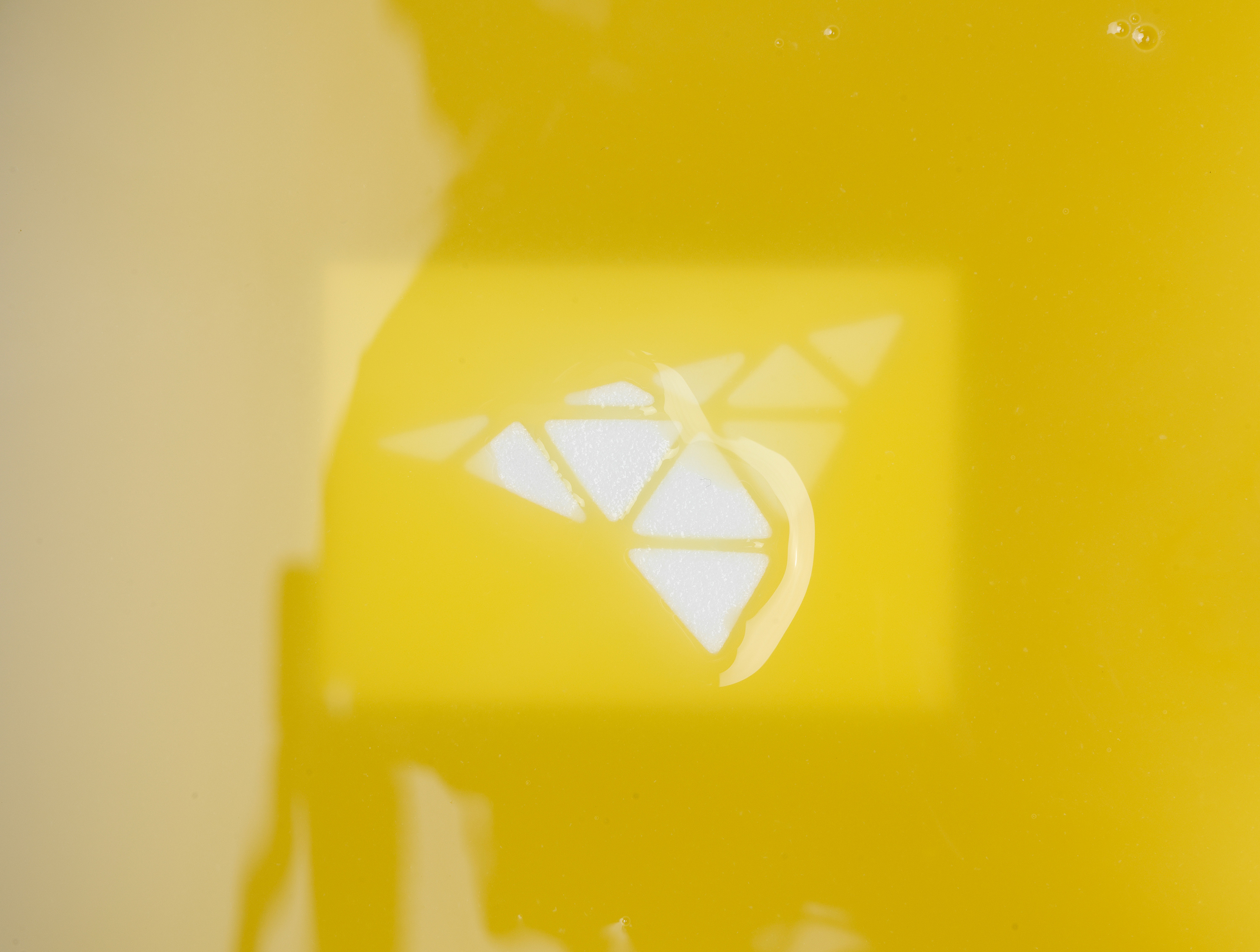Method and Technology
In the stereolithography process, 3D objects made of liquid plastic are created directly from CAD data. After immersing in the photopolymer bath, the raw material is first applied uniformly to the build platform with a wiper. A laser, which is controlled by moving mirrors, moves over the surface and cures it locally at the coordinates specified in the CAD file. The platform then lowers, dips into the plastic bath again, and the wiper distributes the photopolymer evenly on the build platform again. After curing by the laser, the process is repeated until the last layer of the model has been printed and the finished 3D object stands on the base plate.
Get more information about the materials and properties.
How to create 3D objects with stereolithography (SLA)
To prevent the component in the polymer bath from “floating away”, it is fixed to the platform using support structures. These delicate columns are included in the initial model calculation and are made of the same material as the component. The support structures provide stability during printing when the polymerized resin is not fully cured and are subsequently removed. The support structures are the only waste in production, which makes stereolithography an extremely resource-efficient 3D printing process.
